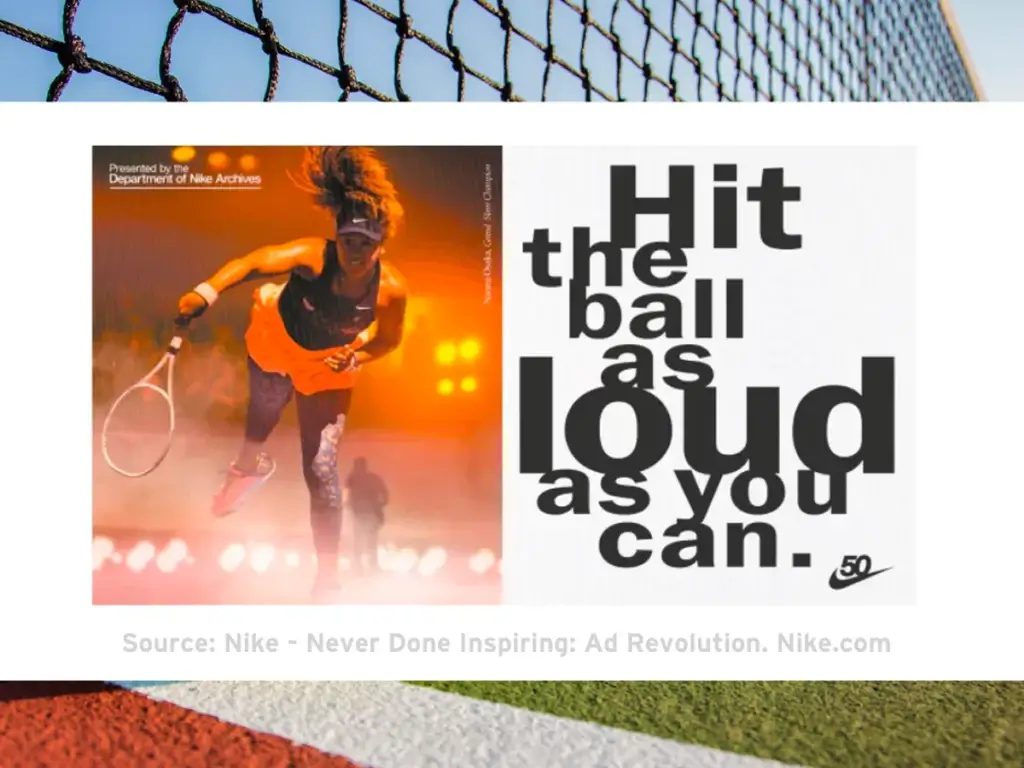Do you want awesome product positioning and messaging? Stand out above your competitors. Learn from Nike’s legendary “Just Do It” campaign, plus insights and tactics from Apple, Salesforce, Content Marketing Institute, and others.
What is the difference between positioning and messaging? How do you craft both to get outstanding results?
Positioning vs Messaging
Pinpoint what makes you special. Document how your company internally describes your advantages. This is positioning.
Now use your positioning to create a guideline for the content your audience will see. This is messaging.
Why clearly define these? People already value your competitors’ products and services. The better you communicate your advantages, the more you stand above your competitors and win over customers. You also build trust, brand awareness, and reputation.
This sparks captivating stories about your product and company. Ally Johnston, VP of Corporate Messaging at Salesforce says: “Product messaging and positioning work together and should be the north star for any product launch.”
How do you create great positioning?
Johnston says you must answer:
- What are your customers’ wants and needs, even those they don’t know yet?
- What are their pain points?
- How do they measure success?
- What trends or changes are happening in your market?
- What are your competitors’ products, pricing, and messaging?
Nike’s new positioning and messaging, leading them to “Just Do It”
Jerome Conlon was Nike’s Director of Marketing Insights & Planning in the 1980s. What did he do leading up to the “Just Do It” campaign?

He saw Nike women’s footwear sales had declined 60% for a decade. Reebok had just beaten Nike to become the new sports footwear industry leader. Conlon began holding 2-hour workshops with customers and prospects to find answers.
He grilled runners and fitness enthusiasts of all demographics. How and why were sports important in their lives? What did they like about Reebok and Nike ads? What did they look for when buying shoes?
Conlon confirmed that young men loved competition, extreme sports, and shoe styling. Nike had only targeted this audience of 1 million.
Yet they ignored the audience of 150 million who had even more money to spend on shoes. Women and older fitness consumers loved how exercising made them feel. They also wanted different styles, performance, and pricing.
Conlon and Nike totally revamped their positioning. Nike conveyed this to their ad agency, Weiden+Kennedy, where the “Just Do It” campaign was born.
What can you learn from Nike’s success here?
Nike had a dozen product line managers who each wanted their own product featured in more status quo advertisements. Instead of these conflicting messages, Nike created company-wide positioning. They focused on a better purpose for their brand, appealing to a much larger audience.
Nike’s “Just Do It” campaign is still going strong 30+ years later, while their sales have steadily grown 30 times greater.
How do you create great product messaging?
Content Marketing Institute (CMI) recommends a message architecture. This is a set of prioritized rules that guide you when creating content for your prospects. CMI says “a solid message architecture makes all the difference when you’re planning your content.”
CMI cites the methods of Margot Bloomstein, a Boston-based content strategy consultant. Bloomstein has studied Apple for years. This is the messaging architecture she created for them:
1. Confident but Approachable
- Market Leading
- Accessible
2. Simple
- Clean
- Streamlined
- Unfussy
- Minimally Detailed
3. Inviting
- Friendly
- Supportive
- Not Fawning
This is a corporate voice document but in priority order. Bloomstein recommends the 2-tier approach here. CMI also includes what your company does and the type of customer you target. They recommend this framework:
- First Impression – What do you want people to feel when they first see your brand?
- Value Statement – What do you want people to feel after they learn a bit about you?
- Proof – How can you demonstrate you provide what people need?
Be willing to change this as often as your product changes.

How can you create a great positioning and messaging architecture?
Bloomstein recommends a card sorting exercise. First, pick a leader, not to make decisions, but to keep the meeting focused and help members reach an agreement.
Next, create a set of adjective cards. You could simply write these on paper. Bloomstein uses about 100 cards, each with adjectives like strategic, tactical, traditional, modern, easygoing, assertive, and aggressive. Include any past words you’ve used to describe your brand, plus any writing guidelines you have.
Next, hold a meeting with all whose input you want. Separate the cards into 3 groups: (1) Who we are, (2) Who we are not, and (3) Who we want to be. Encourage conversation, even respectful disagreement. Help the discussion with questions like:
- Why do people need us?
- Is our focus right?
- How can we resonate with people?
- How are we different than competitors?
- Are we consistent with what people already expect?
- Are we memorable?
- What do we stand for?
- How do we link our product message and brand?
- How can we increase touchpoints with customers?
- What are customers excited about?
- How can we save time?
- How can we simplify tough concepts for people?
- What’s our ultimate goal?
Place cards into the 3 groups. Prioritize them. Document your message. Distribute it to all in the company. Keep communicating to keep people using it.
Asana, the mobile work management software maker, said this exercise put “energy around our brand like never before.”
When thinking of the answers to each of these questions, it’s important to keep in mind the Consumer Brand Journey. What’s that? Learn more about the journey here.
What do positioning and messaging mean for you?
Learn from successful campaigns. Let customers guide your approach. Get organized and address changes in your product and market. Put these tips and methods into action to create your own positioning and messaging framework.





